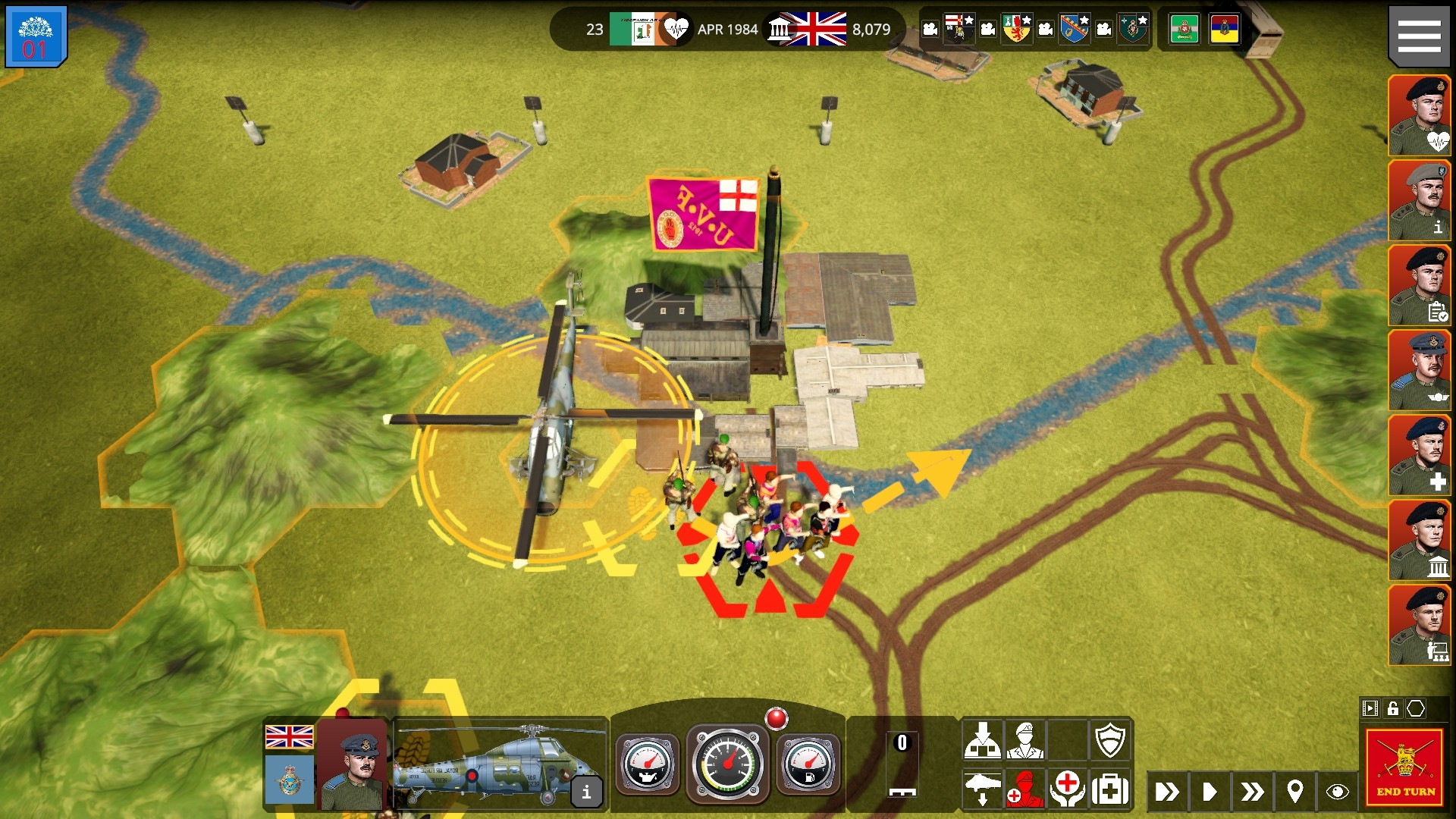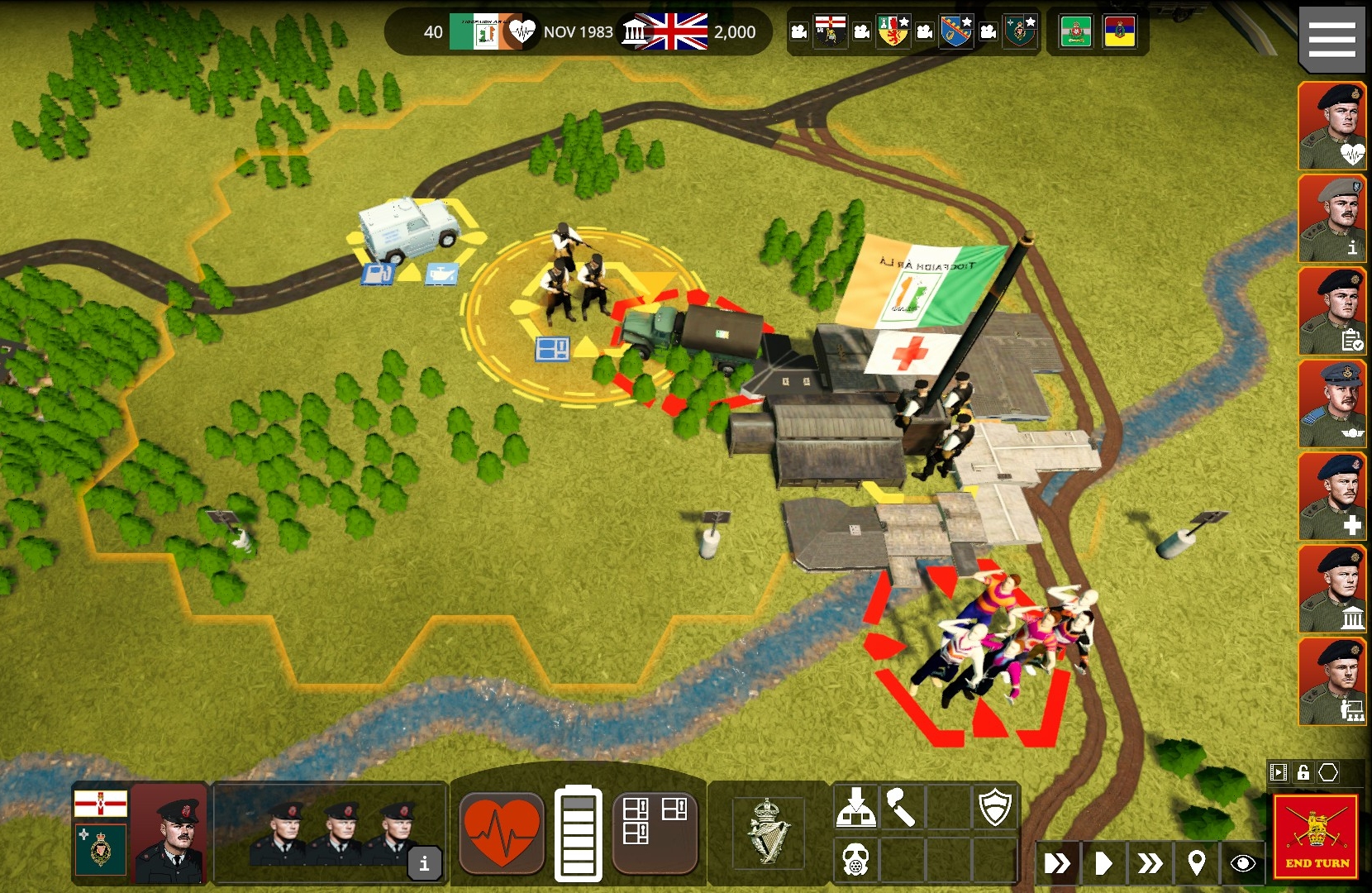If you knew nothing about The Troubles, could you learn about them through Johan Nagel’s new £10 wargame? At the risk of splintering my arse by fence sitting, “Yes and no”.

My first game of the missionless* NI74 lasted around seven hours and left me somewhat conflicted. Although eventful, engrossing, and rammed with apt activities such as riot control, arms cache hunting, and informant recruiting, it somehow managed to feel both too violent and not violent enough.
* Games take place on randomly generated maps, and can be customised in several ways.

I was surprised by how often my British Army units detected, engaged, and eliminated IRA and UVF cadres, and disappointed that the bread-and-butter activities of said cadres – murder, mayhem, and intimidation – weren’t conveyed more explicitly and forcefully.

Perhaps my expectations have been raised unreasonably by recent exposure to the unflinching Burden of Command, but a Troubles game that fails to acknowledge tit-for-tat sectarian killings, collusion, and the the civilian cost of bombing campaigns? I was hoping for more grit.

If I was building a Six Counties-wide COIN game from scratch, I’m not sure I’d make logistics quite so central either. Intricate supply mechanics that made sense on smallish Vietnamese and Afghan maps with turns of unspecified length, feel far less appropriate when applied to the entirety of Northern Ireland and partnered with month-long turns.

When your operations are disrupted by an out-of-fuel Wessex helicopter or a hex of starving paratroopers, you may find yourself thinking ‘This doesn’t feel much like Operation Banner to me’. Maybe Every Single Soldier should have gone with a tighter, more rural focus. Give players a borderland map incorporating a town or two, a dozen or so villages, and a scatter of farmhouses, and suddenly tactical stuff like setting up individual OPs, keeping roads free of IEDs, and ensuring bricks get home for their bacon baps and hot Bovril, feels apt.

I could very easily spend the final paragraph of this short first impressions piece griping about less fundamental flaws such as imperfect map generation, absurdly long save times, and jarring vestiges of Namibia, but it would be fairer if I wound things up by pointing out that the game’s main activity – scouring the countryside for signs of terrorist activity then tracing those signs back to their sources, safehouses and arms caches – is rarely uninteresting, and that ESS has, by reducing unit counts, shrinking and de-sectoring maps, and streamlining refuelling, gone some way to address my main Angola ’86 complaint. If I do end up giving up on Early Access NI74, it won’t be because it overwhelmed me or worked me too hard.


I find the “randomly generated map” a bizarre design choice for the simulation of a conflict so fundamentally defined by a very specific set of lines on a map.
Map generation isn’t completely random (Belfast always ends up on the right-hand side of maps, Derry on the left, and Armagh towards the bottom) but, yes, it’s weird the game doesn’t let you play on a fixed map based on ‘real’ geography if you want to.
Currently, the map generator doesn’t connect all villages to the road network at the start of the game which feels wrong, and sometimes creates rather messy river crossings.